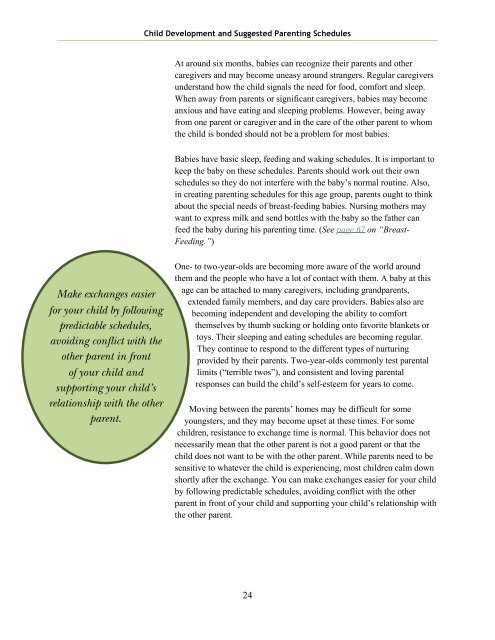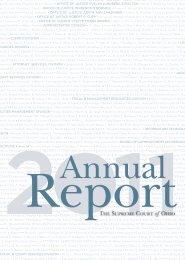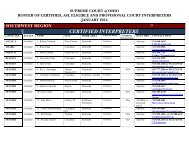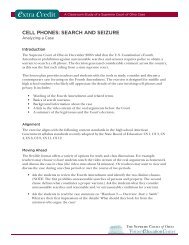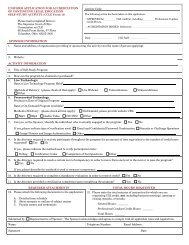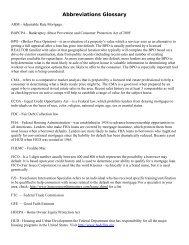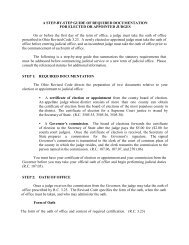Planning for Parenting Time: Ohio's Guide for Parents Living Apart
Planning for Parenting Time: Ohio's Guide for Parents Living Apart
Planning for Parenting Time: Ohio's Guide for Parents Living Apart
You also want an ePaper? Increase the reach of your titles
YUMPU automatically turns print PDFs into web optimized ePapers that Google loves.
Child Development and Suggested <strong>Parenting</strong> Schedules<br />
At around six months, babies can recognize their parents and other<br />
caregivers and may become uneasy around strangers. Regular caregivers<br />
understand how the child signals the need <strong>for</strong> food, com<strong>for</strong>t and sleep.<br />
When away from parents or significant caregivers, babies may become<br />
anxious and have eating and sleeping problems. However, being away<br />
from one parent or caregiver and in the care of the other parent to whom<br />
the child is bonded should not be a problem <strong>for</strong> most babies.<br />
Babies have basic sleep, feeding and waking schedules. It is important to<br />
keep the baby on these schedules. <strong>Parents</strong> should work out their own<br />
schedules so they do not interfere with the baby’s normal routine. Also,<br />
in creating parenting schedules <strong>for</strong> this age group, parents ought to think<br />
about the special needs of breast-feeding babies. Nursing mothers may<br />
want to express milk and send bottles with the baby so the father can<br />
feed the baby during his parenting time. (See page 67 on “Breast-<br />
Feeding.”)<br />
Make exchanges easier<br />
<strong>for</strong> your child by following<br />
predictable schedules,<br />
avoiding conflict with the<br />
other parent in front<br />
of your child and<br />
supporting your child’s<br />
relationship with the other<br />
parent.<br />
One- to two-year-olds are becoming more aware of the world around<br />
them and the people who have a lot of contact with them. A baby at this<br />
age can be attached to many caregivers, including grandparents,<br />
extended family members, and day care providers. Babies also are<br />
becoming independent and developing the ability to com<strong>for</strong>t<br />
themselves by thumb sucking or holding onto favorite blankets or<br />
toys. Their sleeping and eating schedules are becoming regular.<br />
They continue to respond to the different types of nurturing<br />
provided by their parents. Two-year-olds commonly test parental<br />
limits (“terrible twos”), and consistent and loving parental<br />
responses can build the child’s self-esteem <strong>for</strong> years to come.<br />
Moving between the parents’ homes may be difficult <strong>for</strong> some<br />
youngsters, and they may become upset at these times. For some<br />
children, resistance to exchange time is normal. This behavior does not<br />
necessarily mean that the other parent is not a good parent or that the<br />
child does not want to be with the other parent. While parents need to be<br />
sensitive to whatever the child is experiencing, most children calm down<br />
shortly after the exchange. You can make exchanges easier <strong>for</strong> your child<br />
by following predictable schedules, avoiding conflict with the other<br />
parent in front of your child and supporting your child’s relationship with<br />
the other parent.<br />
24


